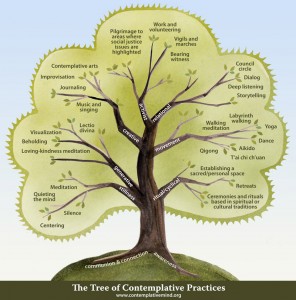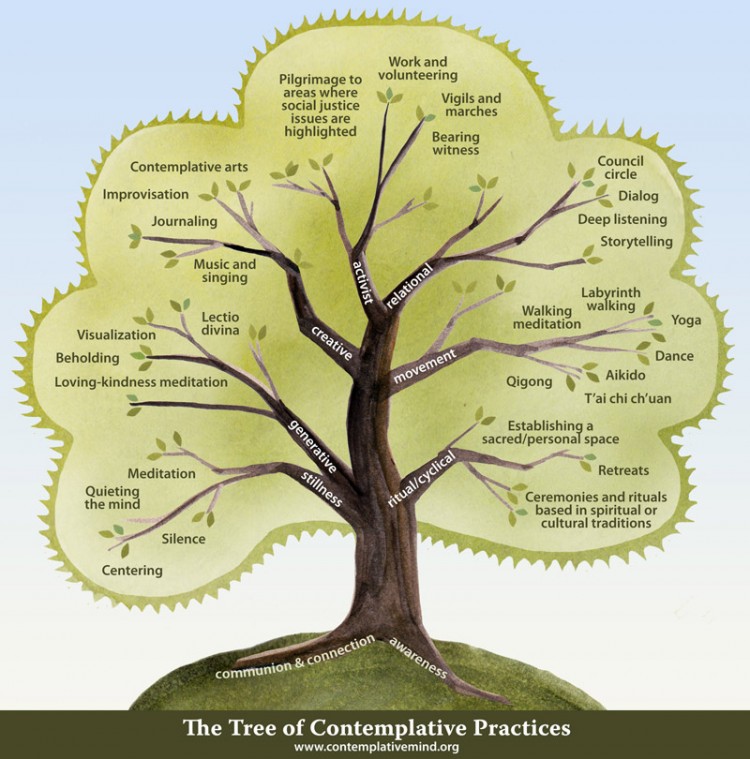Last week, I mentioned an interview with Mirabai Bush on NPR. In addition to thinking about who I am, it got me thinking about meditation, which I’m sure is going to make Suzanne laugh.

Ms. Bush’s organization, the Center for Contemplative Mind in Society, has created an illustration they call the Tree of Contemplative Practices which illustrates contemplative practices across secular and academic settings. The aforementioned interview also reminds us that nearly every spiritual practice has some sort of contemplative practice.
The great thing about this tree is the separation of contemplative practice from spiritual practice. I have no belief in spiritual practices. I’m an atheist. I believe religion is an evolutionary adaptation allowing humans to create social groups based on common belief systems. The concept of contemplative practice outside of spirituality is as important as the variety of contemplative practices.
When people begin to look at this tree and combine it with the idea that contemplative practice can be virtually anything that allows you freedom of thought beyond the present moment, they see that they have it in their own lives. From sitting quietly waiting for tea to steep or coffee to brew to physical activities that allow the mind to work on other things, to focused meditation – it’s all contemplative practice. Furthermore, we benefit from it.
Two things, for me, immediately come to mind. Riding motorcycles at the limit creates a Zen-like state where you’re not thinking of anything but the present. It’s a survival instinct. If you think of anything else, you’re risking a potentially fatal mistake. For some people, riding at less than the limit does the same thing, which is the fundamental idea of my friend Dwain’s CEO Ride.
Even the Entrepreneurial Operating System, which we use to run our company, advises contemplative practice. Executives are advised to take a 1-2 hour clarity break each week to think about the business. Generally it’s recommended to be off-site and include some way of taking notes. For many of us, scheduling this time is the hardest thing we do all week. I know it is for me. I’ve been successful in getting it done maybe twice.
Many of us unknowingly used to have minutes of contemplative practice almost every day, in the small gaps of time created by the necessities of life. Waiting in line, driving to work, sitting in the carpool line at school. But these minutes are now filled. We’re faced with constant engagement from technology. What do you do when faced with a long wait in line at the grocery? Check email or social media, read an article online, take a selfie. Not to romanticize standing in line, but all those activities diminish contemplative practice.
So here’s a challenge – find your contemplative space. Drive to work with the silence of your own thoughts. Stand in line at the grocery store and daydream. Sit on your patio with a coffee and observe around you. You may be better for it.

3 thoughts on “Navel-gazing as a practice”